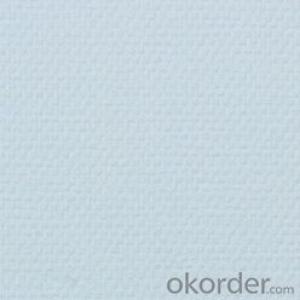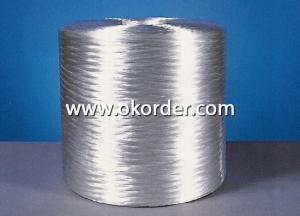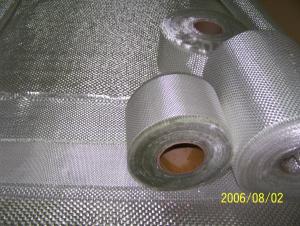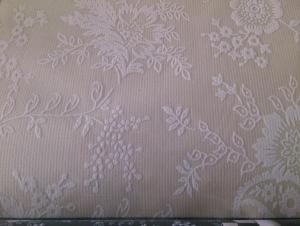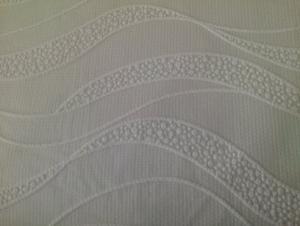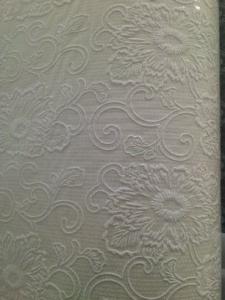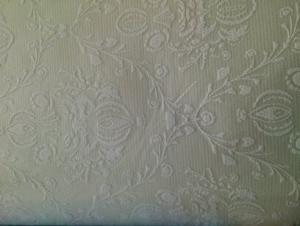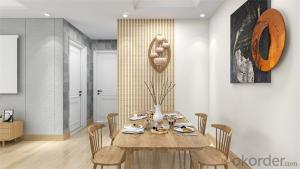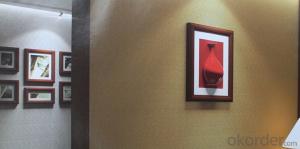Fiberglass Wallcovering Cloth Frame Retardant No:81502
- Loading Port:
- Shanghai
- Payment Terms:
- TT OR LC
- Min Order Qty:
- 100 m²
- Supply Capability:
- 100000 m²/month
OKorder Service Pledge
OKorder Financial Service
You Might Also Like
Fiberglass Wallcovering Cloth Frame Retardant No:81502
Specification of Wallcovering Cloth
.Environment-friendly
.Flame retardent
.Air permeability
.Waterproof
.Anti-corrosion
.Imcomparable strength
.Abundant patterns and colors
.Long life time
Packing Details
.Width:1m
.Length:25/50m
.Each roll of wallcovering cloth is wrapped in a shrinking polythene film,then put in carton
Introduction of wallcovering Cloth
Fiberglass wallcovering cloth,that combines the versatility of paint,from latex to epoxy,with the
strength and benefits of woven fiberglass textile yarns to meet the most demanding wall finish
requirments.Fiberglass textile yarns,as a kind of natural materials,are woven into various textures
and patterns and then treated with a natural starch binder for dimensional stability during the hanging
process.
Compared with traditional wall papers,fiberglass wall covering cloth has the following advantages:
Environment friendly,Flame Retardant,Air Permeability,Shock Resistance,Waterproofing,Anti-corrosion,Abundant Colors&Patterns.
Product Show(real product&desigh sketch)
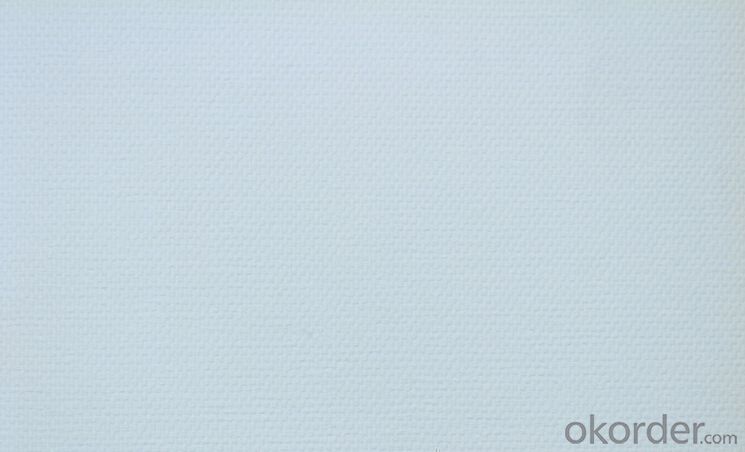
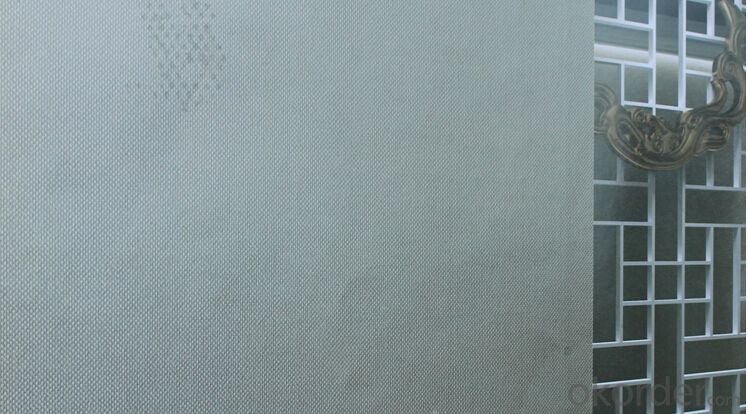
Application of Wallcovering Cloth
As a high-tech indoor decorating material,fiberglass wallcovering cloth is widely used in resident homes,
offices and shops and even cinemas,theatres,hotels and hospital faclilties,air ports,office buildings,shopping centers and schools.
Test Report
Our product has passed test by SGS as follows:
EN 12956:for determination of dimensions,straightness,spongeability and washability.
EN 12149:for determination of magration of heavy metals and certain other elements,of
vinyl monomer and of formaldehyde release.
EN 20105-B02:light solidity.
Our products had passed test of Fire Retardancy M1 Class by LINE.
- Q:Is fiberglass wallcovering cloth suitable for use in basements or below-grade areas?
- Indeed, basements or below-grade areas are suitable environments for the utilization of fiberglass wallcovering cloth. Given its durability and resistance to moisture, fiberglass proves to be a resilient material capable of enduring the typically humid and damp conditions prevalent in basements. Furthermore, its mold and mildew resistance make it an optimal selection for spaces with elevated moisture levels. Moreover, the easy cleanup and maintenance of fiberglass wallcovering cloth render it a pragmatic choice for basements or below-grade areas where cleanliness holds significance.
- Q:Can fiberglass wallcovering cloth be used in exterior architectural elements?
- Indeed, exterior architectural elements can indeed utilize fiberglass wallcovering cloth. Renowned for its robustness and ability to withstand various weather conditions, fiberglass wallcovering cloth is an appropriate choice for outdoor applications. It is frequently employed in outdoor areas such as building facades, exterior walls, and cladding systems. The fiberglass material's resistance against fading, cracking, and peeling ensures its durability, even in severe weather conditions. Furthermore, fiberglass wallcovering cloth provides exceptional insulation properties, making it highly suitable for energy-efficient architectural designs. In summary, the reliability of fiberglass wallcovering cloth stems from its strength, durability, and resistance to weathering, rendering it a dependable option for exterior architectural elements.
- Q:Can fiberglass wallcovering cloth be used in historical buildings?
- Yes, fiberglass wallcovering cloth can be used in historical buildings. Fiberglass wallcovering cloth is a durable and flexible material that can provide a range of benefits in historical buildings. It can be used to repair and reinforce damaged or deteriorated walls, helping to restore the structural integrity of the building. Additionally, fiberglass wallcovering cloth can be applied over existing wallcoverings, such as plaster or wallpaper, to create a smooth and even surface for painting or further decoration. This can help to preserve the historical character of the building while also providing added protection against future damage. However, it is important to consult with preservation experts and follow appropriate guidelines and techniques to ensure that the use of fiberglass wallcovering cloth is in line with the historical significance of the building and does not compromise its authenticity.
- Q:Can fiberglass wallcovering cloth be used in exterior art installations or sculptures?
- Yes, fiberglass wallcovering cloth can be used in exterior art installations or sculptures. Fiberglass cloth is known for its durability, weather resistance, and ability to withstand harsh environmental conditions. These properties make it suitable for outdoor applications where the artwork or sculpture needs to withstand exposure to sunlight, rain, wind, and temperature fluctuations. Additionally, fiberglass cloth is lightweight, flexible, and easy to work with, allowing artists and sculptors to shape and mold it according to their artistic vision. It can be used to create intricate details, textures, and patterns, enhancing the overall aesthetic appeal of the installation or sculpture. Furthermore, fiberglass cloth is resistant to rot, decay, and insect damage, ensuring the longevity and longevity of the artwork or sculpture. It is also fire-resistant, providing an added layer of safety in case of accidental fire hazards. However, it is important to note that fiberglass cloth should be properly sealed and coated with a suitable protective finish to enhance its durability and resistance to fading. This will help preserve the appearance and integrity of the artwork or sculpture over time. Overall, fiberglass wallcovering cloth is a versatile and reliable material that can be effectively used in exterior art installations or sculptures, providing artists with the necessary qualities for creating long-lasting and visually stunning outdoor artwork.
- Q:Does fiberglass wallcovering cloth have any specific installation requirements for temperature conditions?
- For the best outcome, it is necessary to follow specific installation guidelines when it comes to temperature conditions for fiberglass wallcovering cloth. It is advised to install the cloth in temperatures between 50°F (10°C) and 90°F (32°C). If the cloth is installed in temperatures lower than 50°F, the adhesive may not adhere properly, resulting in potential lifting or peeling of the cloth. Conversely, installing it in temperatures exceeding 90°F can cause the adhesive to dry too quickly, making it challenging to position the cloth correctly. Therefore, it is crucial to ensure that the temperature conditions fall within the recommended range during installation to achieve a successful and durable application of fiberglass wallcovering cloth.
- Q:Is fiberglass wallcovering cloth suitable for use in gyms or sports facilities?
- Yes, fiberglass wallcovering cloth is suitable for use in gyms or sports facilities. Fiberglass wallcovering cloth has several properties that make it an ideal choice for these types of environments. Firstly, fiberglass is a durable material that can withstand heavy use and high levels of activity. Gyms and sports facilities are often subjected to intense physical activity, which can lead to wear and tear on the walls. Fiberglass wallcovering cloth is designed to be resistant to scratches, impacts, and abrasions, ensuring that it can withstand the demands of these environments. Secondly, fiberglass wallcovering cloth is easy to clean and maintain. Gyms and sports facilities are prone to dirt, sweat, and other types of stains. Fiberglass wallcovering cloth is washable and can be easily cleaned with mild detergents. This makes it an ideal choice for maintaining a clean and hygienic environment in gyms and sports facilities. Additionally, fiberglass wallcovering cloth is also resistant to moisture and humidity. Gyms and sports facilities often have high levels of humidity due to activities that involve sweating. Fiberglass wallcovering cloth does not absorb moisture, preventing the growth of mold and mildew, which can be a common problem in these environments. Furthermore, fiberglass wallcovering cloth is available in a variety of designs and patterns, allowing for customization to fit the aesthetic requirements of the gym or sports facility. It can be easily painted or digitally printed to display logos, team colors, or motivational messages. In summary, fiberglass wallcovering cloth is a suitable choice for use in gyms or sports facilities due to its durability, ease of maintenance, resistance to moisture, and customizable design options.
- Q:Can fiberglass wallcovering cloth be used in exterior window surrounds or trim?
- Fiberglass wallcovering cloth is not typically recommended for use in exterior window surrounds or trim. While fiberglass is a durable and versatile material, it is primarily designed for interior applications such as walls and ceilings. Exterior window surrounds and trim are exposed to various weather conditions, including rain, sunlight, and temperature fluctuations. These factors can cause the fiberglass cloth to deteriorate over time and compromise its effectiveness. Instead, it is advisable to use materials specifically designed for exterior applications, such as PVC or vinyl trim, aluminum, or wood. These materials are better equipped to withstand the elements and provide long-lasting protection for your windows and exterior surfaces.
- Q:How is fiberglass wallcovering cloth made?
- Fiberglass wallcovering cloth is made through a process known as fiberglass weaving. It starts with the production of fiberglass yarns, which are made by pulling molten glass through tiny holes to create thin, continuous strands. These strands are then coated with a sizing material to improve their strength and flexibility. Next, the fiberglass yarns are woven together on specialized looms to create a fabric. The weaving process involves interlacing the yarns in a specific pattern, such as plain weave or twill weave, to give the fabric its desired strength and texture. Once the fabric is woven, it undergoes a finishing treatment to enhance its performance and appearance. This treatment typically involves the application of chemical coatings, such as acrylic or vinyl, to make the fabric more durable, resistant to moisture and stains, and easy to clean. Some wallcovering cloths may also be treated with fire-retardant chemicals for safety purposes. After the finishing treatment, the fabric is rolled onto large spools or cut into specific lengths and packaged for distribution. It is then ready to be used as a wallcovering material, providing a durable and attractive surface for walls in various residential, commercial, and industrial settings. Overall, the process of making fiberglass wallcovering cloth involves the production of fiberglass yarns, weaving them into a fabric, and applying finishing treatments to enhance its performance. This results in a versatile and long-lasting material that can be used to enhance the aesthetics and functionality of interior spaces.
- Q:Can fiberglass wallcovering cloth be used in wet areas, such as bathrooms?
- Certainly! Fiberglass wallcovering cloth is indeed applicable for wet environments like bathrooms. Its remarkable water-resistant qualities make it an ideal choice for spaces with extensive moisture. Moreover, fiberglass effectively resists the growth of mold and mildew, a prevalent concern in bathrooms. Furthermore, the maintenance and cleaning of fiberglass wallcovering cloth are effortless, enabling it to endure the humidity and sporadic splashes common in wet areas. Nevertheless, it is crucial to ensure meticulous installation and sealing to avert any water seepage behind the wallcovering.
- Q:Can fiberglass wallcovering cloth be removed without damaging the walls?
- Yes, fiberglass wallcovering cloth can be removed without damaging the walls if the proper removal techniques are followed. This typically involves softening the adhesive with a wallpaper removal solution and carefully peeling off the cloth. It is important to take precautions and follow instructions to ensure the walls remain undamaged during the removal process.
1. Manufacturer Overview |
|
|---|---|
| Location | |
| Year Established | |
| Annual Output Value | |
| Main Markets | |
| Company Certifications | |
2. Manufacturer Certificates |
|
|---|---|
| a) Certification Name | |
| Range | |
| Reference | |
| Validity Period | |
3. Manufacturer Capability |
|
|---|---|
| a)Trade Capacity | |
| Nearest Port | |
| Export Percentage | |
| No.of Employees in Trade Department | |
| Language Spoken: | |
| b)Factory Information | |
| Factory Size: | |
| No. of Production Lines | |
| Contract Manufacturing | |
| Product Price Range | |
Send your message to us
Fiberglass Wallcovering Cloth Frame Retardant No:81502
- Loading Port:
- Shanghai
- Payment Terms:
- TT OR LC
- Min Order Qty:
- 100 m²
- Supply Capability:
- 100000 m²/month
OKorder Service Pledge
OKorder Financial Service
Similar products
New products
Hot products
